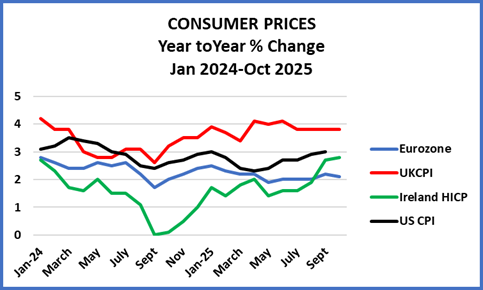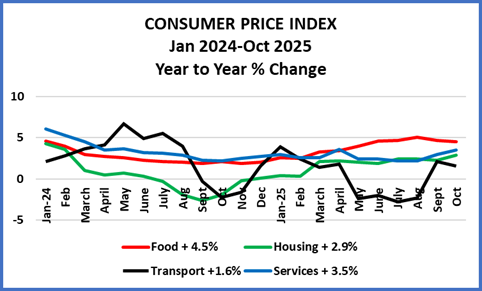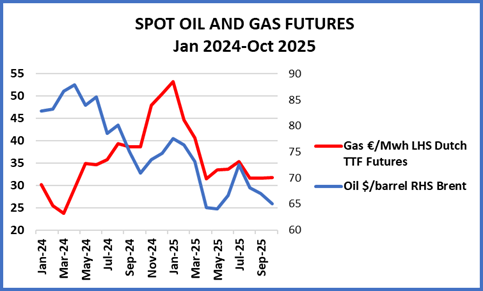The latest figures on inflation for Ireland released by the CSO show the inflation advanced again in October. The Harmonised Index of Consumer Prices, the EU’s measure of inflation, shows a year to year increase of 2.8% for Ireland. This compares with an increase of 2.7% in September and is the largest monthly increase since January 2024. The index fell slightly from 2.2% to 2.1% in the EU. The Irish Consumer Price Index, the measure favoured by the CSO, and more generally quoted, also shows an increases of 2.9%, up from 2.7% in September. Surging food prices are the main reason for the increase with an increase in Housing partly offset by a slower rise in Transport.
In the US inflation to September was 3% compared with 2.9% in August. The increases were across the board and were influenced by tariffs. There are no official data for October due to the government shut down. Indicators are that inflation was about the same as in September.
The second graph shows some detail on the Irish CPI for the period to September. The main upward influence is Food which rose by 4.5% in the year to October continuing an upward trend since mid 2024. Housing and Services have risen more moderately but still slightly above the average. There was a sight fall in the rate of inflation in Transport.
Oil and gas are critically important commodities and major influences on prices. In most of 2024, gas had been increasing in price while oil has been falling. But since the start of this year until recently prices of both have been falling. The situation in the Gulf appears to have had a relatively minor impact on prices. Indicators of weak demand in China, the uncertain impact of Trump’s tariff policy and the decision by Saudi Arabia to facilitate lower oil prices, are the main influences.



Unless noted to the contrary all graphs are based on CSO statistics.